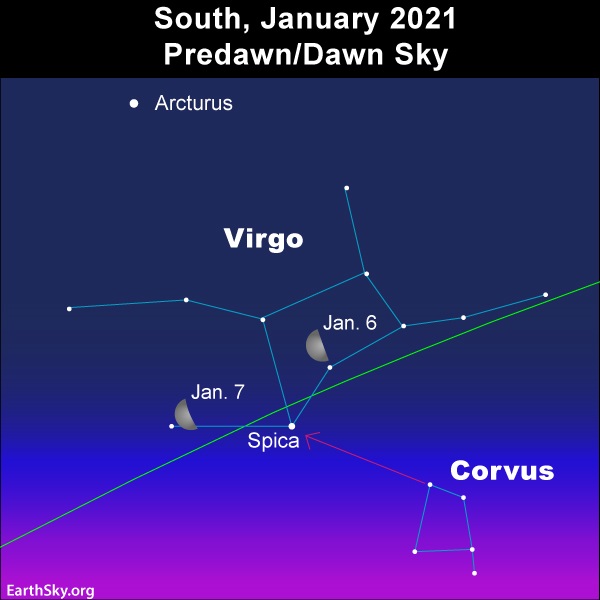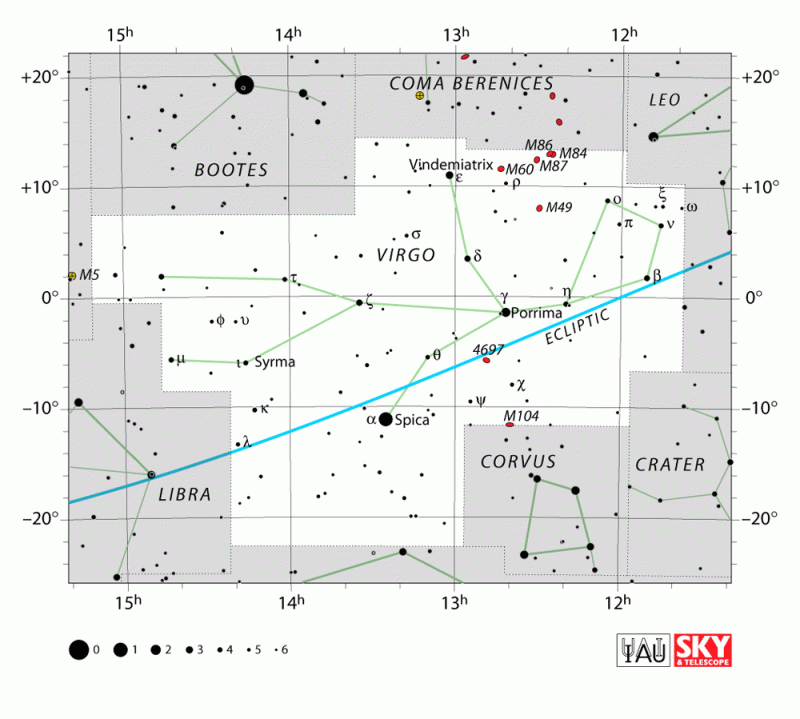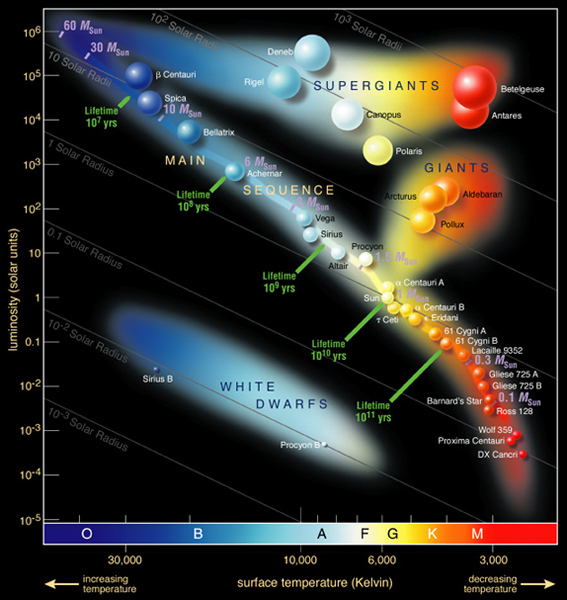
The nearly last quarter moon is rising quite late now, around the middle of the night for almost everywhere worldwide. The bright star near the moon on the mornings of January 6 and 7, 2021, will be Spica, brightest light in the constellation Virgo the Maiden. In Greek skylore, Virgo is associated with the goddess of the harvest, Ceres. And Spica – whose name stems from the Latin word for ear – represents an ear of wheat held in the Maiden’s hand.
The 2021 lunar calendars are here! Stock is running low. Order yours before they’re gone!
If you’re not one to stay up late, your best bet is to wake up early to view the moon and Spica before daybreak. The half-illuminated last quarter phase will come on January 6, 2021, at 09:37 UTC. At time zones in the mainland United States, the moon reaches its last quarter phase on January 6 at 4:37 a.m. Eastern Time, 3:37 a.m. Central Time, 2:37 a.m. Mountain Time and 1:37 a.m. Pacific Time.
Visit Sunrise Sunset Calendars to find out when the moon rises into your sky, remembering to check the moonrise and moonset box.
Visit Heavens-Above to find out the moon’s present position in front of the constellations of the zodiac.
Spica, a blue-white gem of a star, ranks as the 15th-brightest star to light up the nighttime sky. When you consider that Spica resides some 262 light-years from our solar system, this star must be intrinsically very luminous to shine at 1st-magnitude brightness in Earth’s sky.

The ecliptic – Earth’s orbital plane projected onto the constellations of the zodiac – crosses the celestial equator (declination of O degrees) in the constellation Virgo. Because Spica resides so close to the ecliptic, it is considered a major star of the zodiac. Virgo constellation chart via the International Astronomical Union (IAU).
Spica’s blue-white color reveals that this star has an extremely high surface temperature (22,400 kelvins, 39,860 F, 22,127 C). In contrast, our yellow-colored sun has a surface temperature of nearly 6,000 K (10,340 F, 5,727 C) whereas ruddy Antares sports a rather cool surface temperature of 3,500 K (5,840 F, 3,227 C).

A star that is blue or blue-white in color, such as Spica at the upper left, has a high surface temperature. In contrast, a red-colored star, such as Antares and Betelgeuse at the upper right, has a cool surface temperature. Image of Hertzsprung-Russell diagram via ESO.
Spica, like all the stars, rises some four minutes earlier daily, 1/2 hour earlier weekly and two hours earlier monthly. So, instead of rising around midnight at mid-northern latitudes, as it does in January, Spica will rise around sunset in early April. Because Spica shines from dusk till dawn in April, we in the Northern Hemisphere often associate this star with the sweet season of spring.
Bottom line: In January, Spica is out from late night until dawn. Use the moon to guide your eye to Spica before daybreak January 6 and 7, 2021, and look forward to this star’s all-night appearance in April.
Source:
https://earthsky.org/tonight/moon-spica-from-late-night-till-dawn